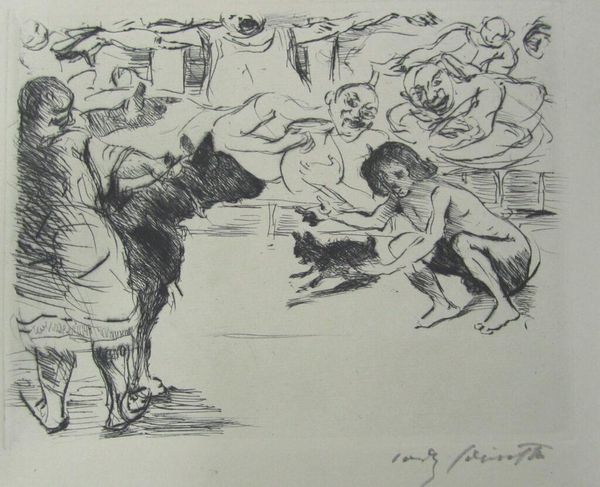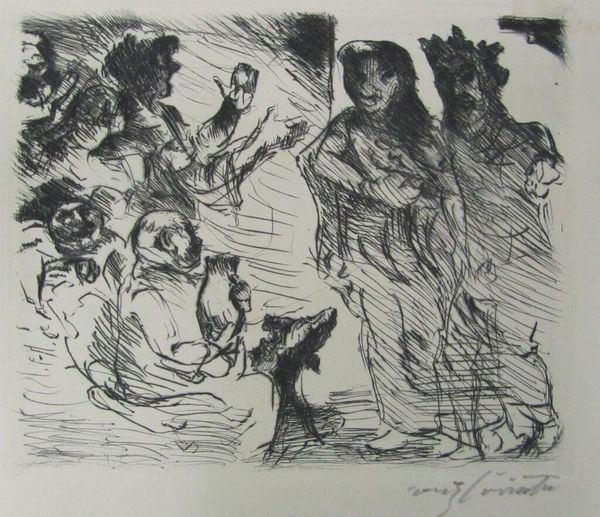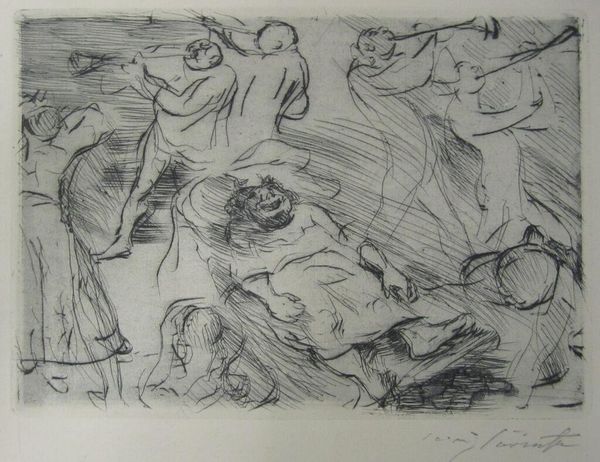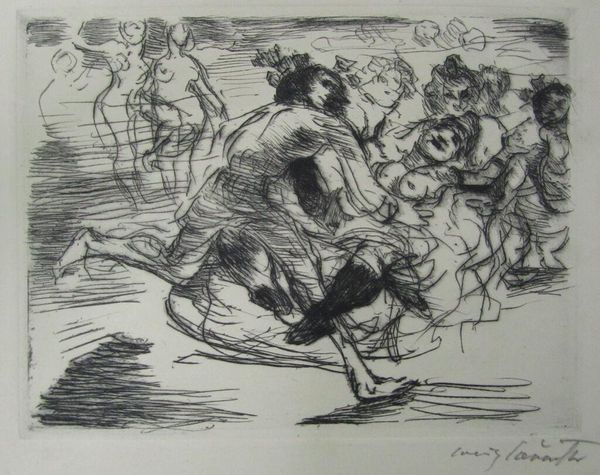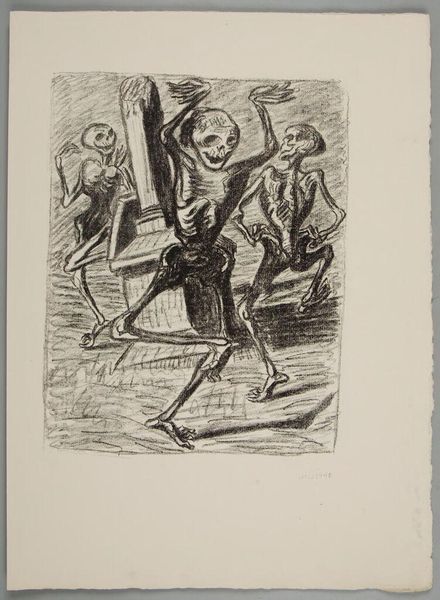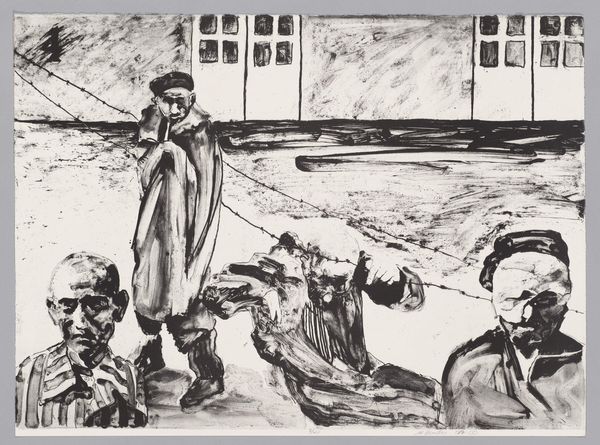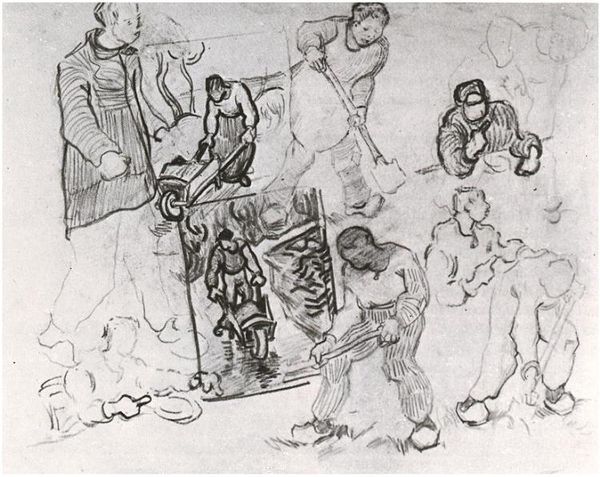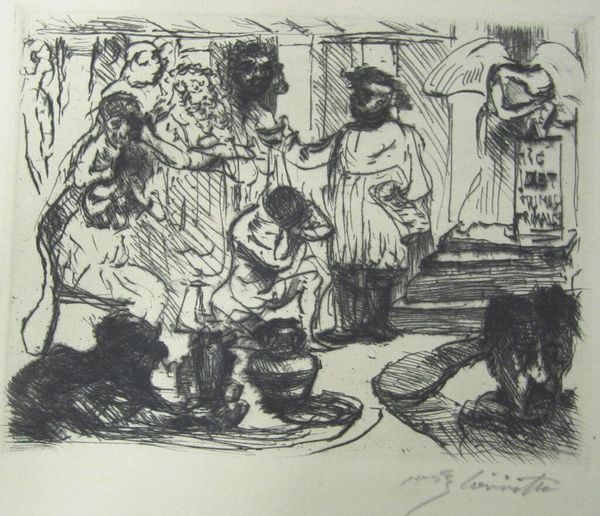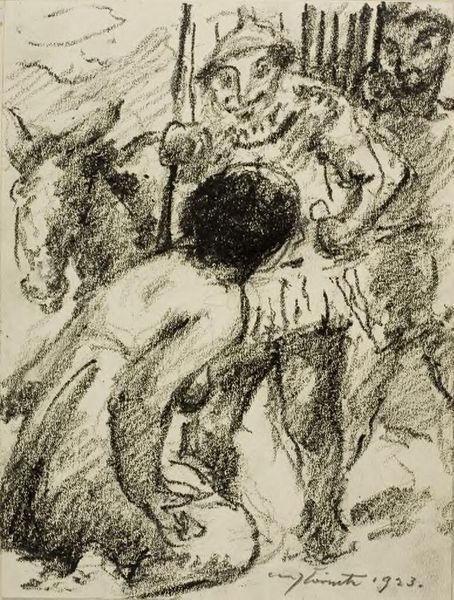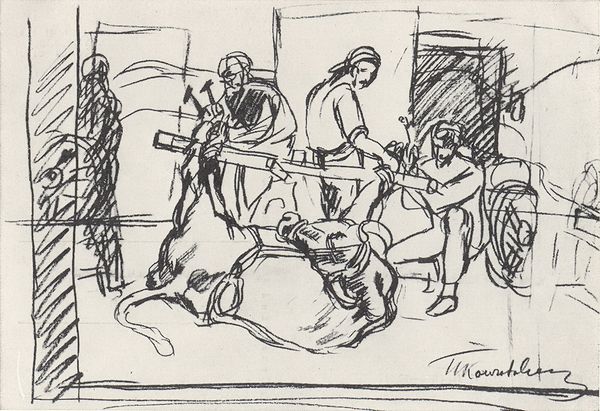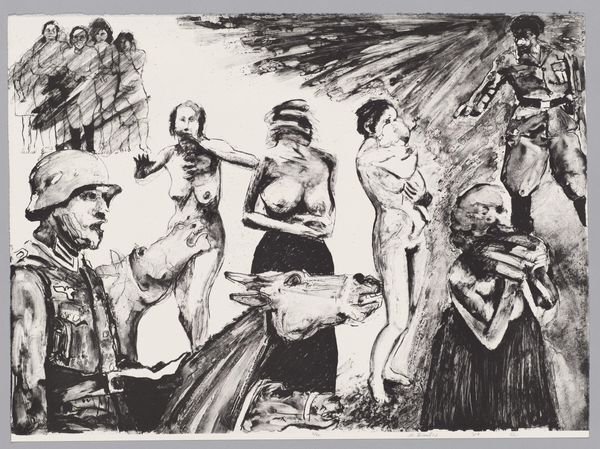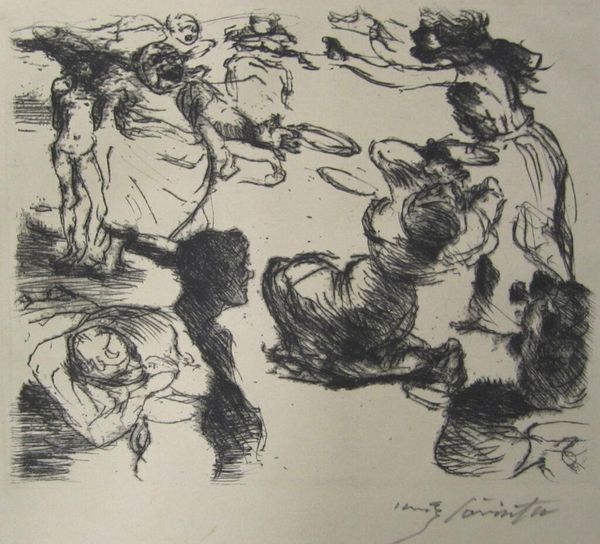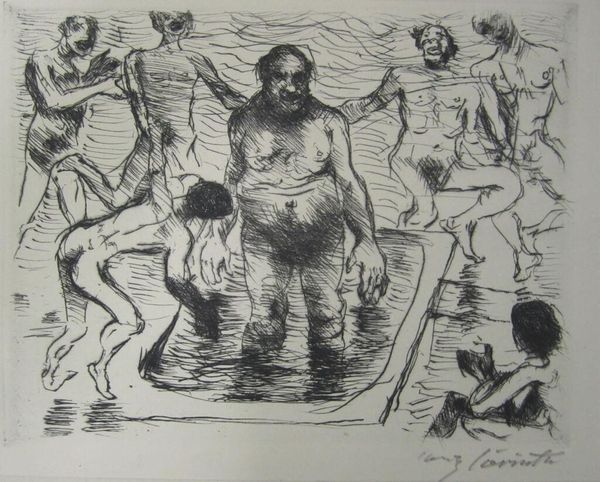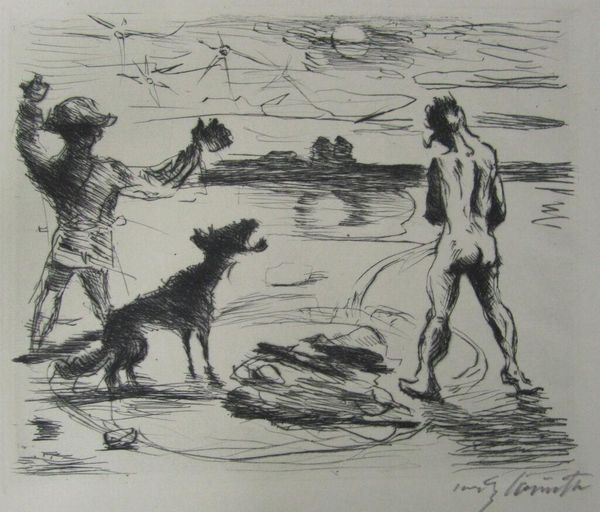
A Roman, a boy and a servant watching two figures playing ball 1919
0:00
0:00
Dimensions: plate: 12.3 x 16.2 cm (4 13/16 x 6 3/8 in.) sheet: 16.8 x 23 cm (6 5/8 x 9 1/16 in.)
Copyright: CC0 1.0
Curator: Lovis Corinth's "A Roman, a boy and a servant watching two figures playing ball," currently residing at the Harvard Art Museums, presents a fascinating glimpse into leisure. Editor: It's immediately striking how the figures playing ball are rendered with such energy, a stark contrast to the relative stillness of the observers. Curator: Indeed. The artist's etching technique, the way he uses line and shadow, speaks volumes about the printmaking process itself. Notice the economy of line, how he evokes form with so little. Editor: And the symbolic weight of the scene! Ball games in art often represent concepts of chance, skill, and even social dynamics. The presence of a servant underscores class distinctions, framing the Roman's leisure in a particular light. Curator: I agree. This work is not just an illustration of a scene but a social commentary. The materials used—the copper plate, the etching ink—all contribute to its historical context. Editor: It leaves one wondering about the rules of the game, the lives of those playing and watching, and the ever-present performance of social standing. Curator: Seeing how Corinth utilized accessible materials to explore societal divisions is a testament to the era’s shifting artistic values. Editor: The cultural symbols resonate, even now prompting contemplation on work, play, and the power dynamics inherent in observation.
Comments
No comments
Be the first to comment and join the conversation on the ultimate creative platform.
